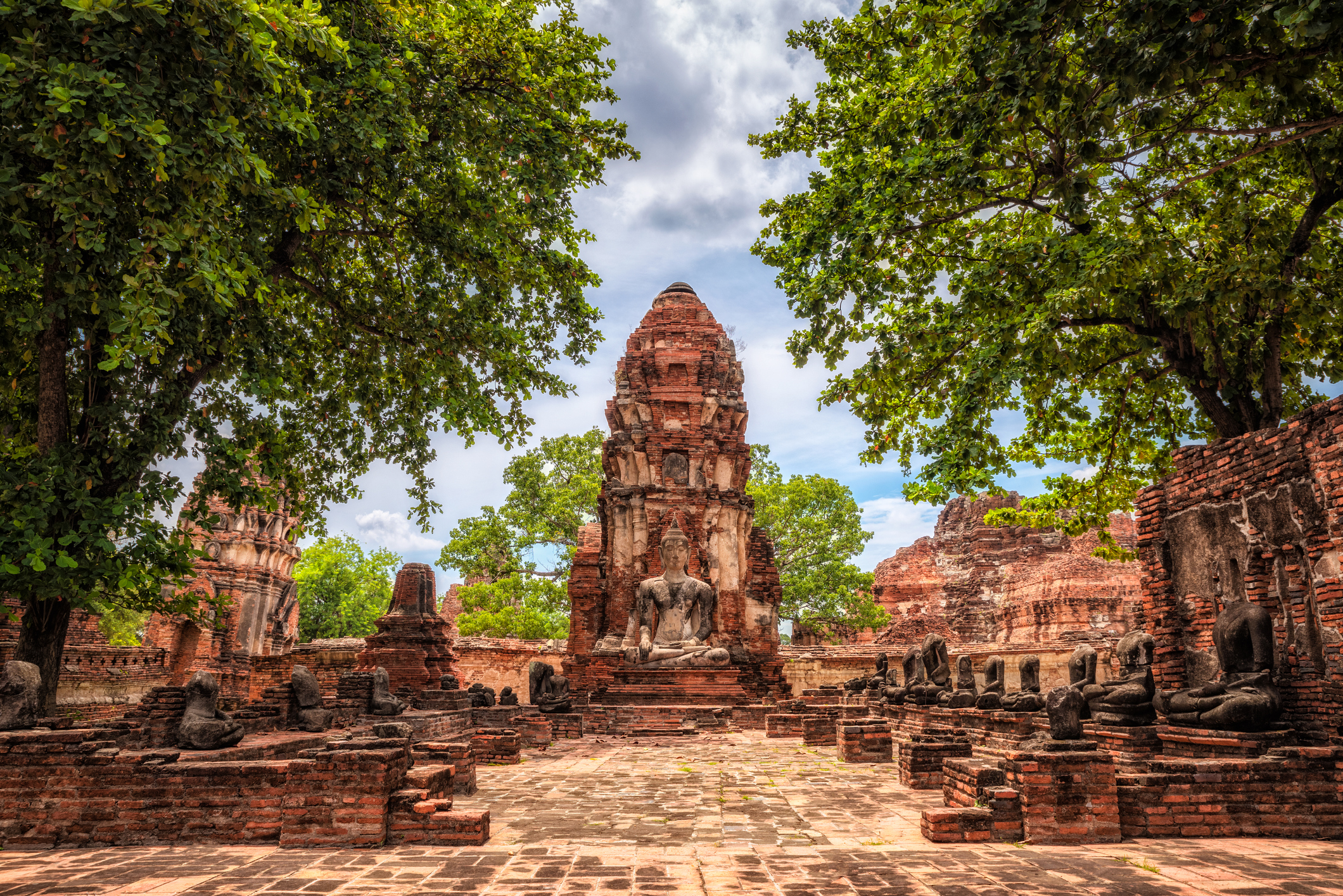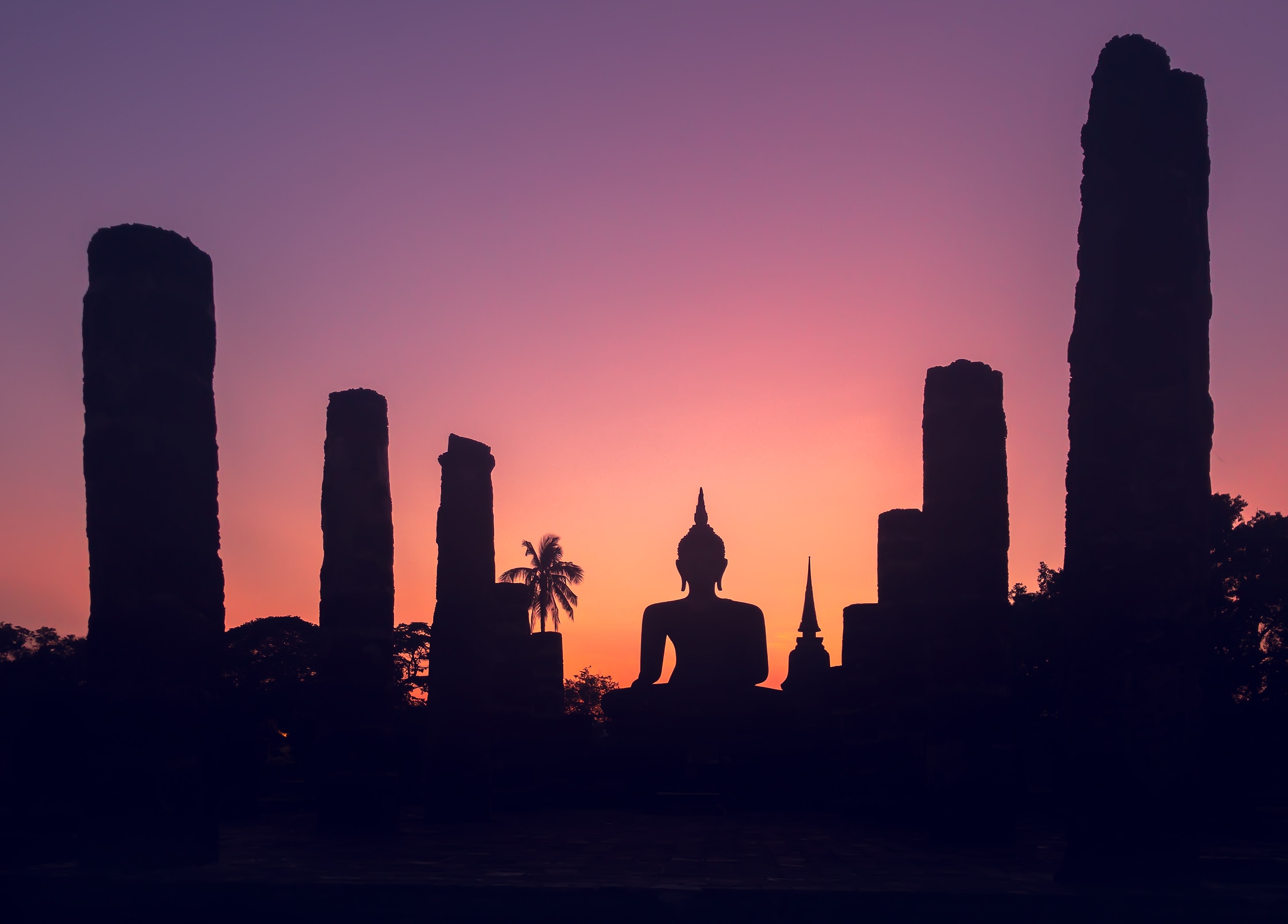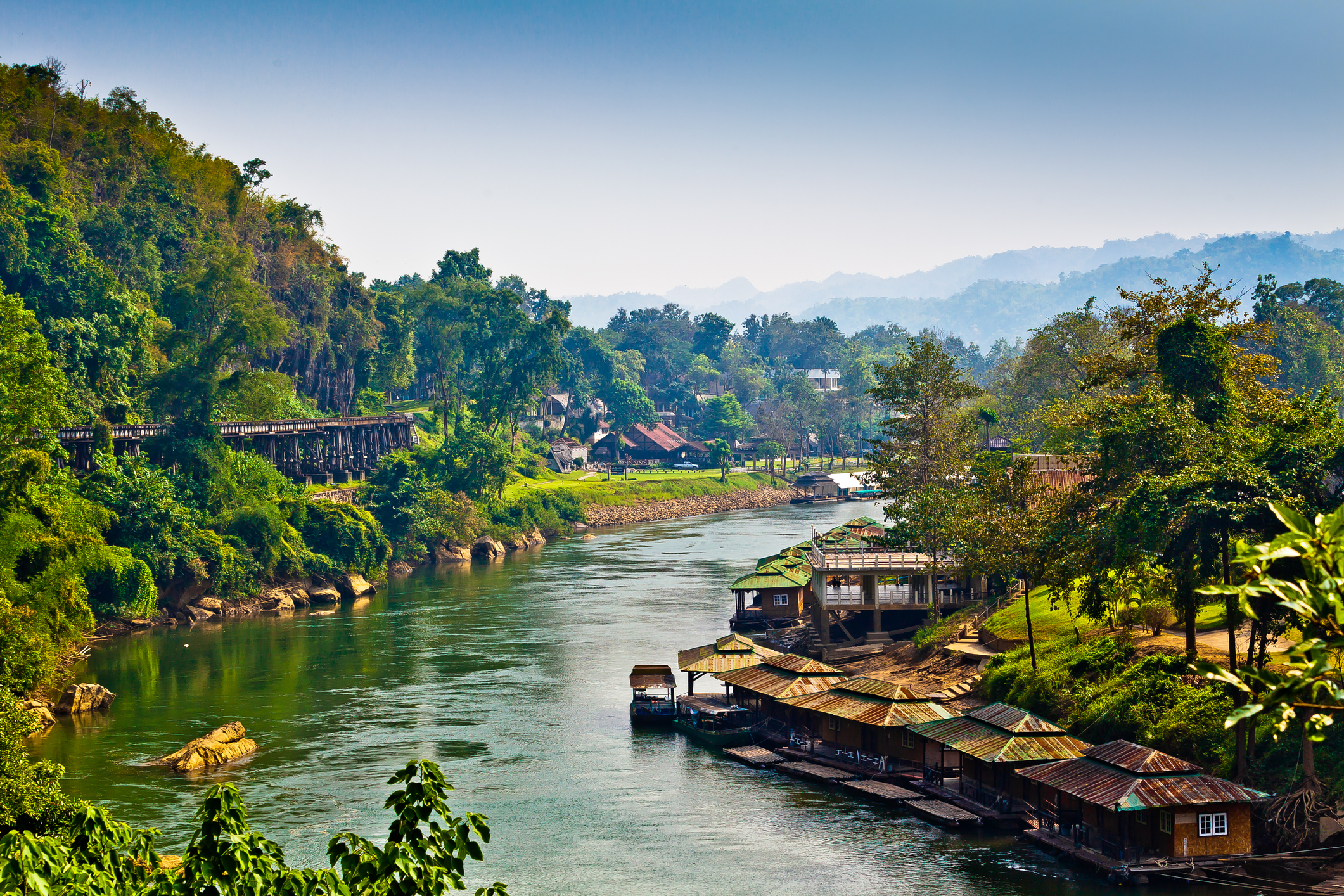
Ayutthaya
Before it was razed to the ground by the Burmese in 1767, Ayutthaya had a million inhabitants and was one of the biggest cities in the world. Enthusiastically absorbing influences from across Europe and Asia, its cosmopolitan roots stretch as far as Japan, Arabia, Portugal and Italy.
In its heyday, Ayutthaya was a force to be reckoned with — in every sense. It had a remarkably prosperous and advanced culture, and diplomatic links with everyone from the French Court at Versailles to the Mughal Court in Delhi. On top of that, it had a magnificent architecture of tall, brick reliquary towers and monumental Buddhist monasteries, all ringed by a five-metre-thick fortified wall with almost 100 gates.
Today, Ayutthaya’s glories stand in ruins, but it’s still possible to get a sense of just how impressive the city must have been. Unlike Sukhothai, whose ruins are preserved away from development, Ayutthaya is a living, breathing city whose heritage survives as much in its people, food and culture as in its archaeological sites. New neighbourhoods have sprung up between the brick spires and tamarind trees, and residents of the Muslim Quarter trace their roots back to Persian, Arabian and Cham traders who sold jewels and fabrics in the city’s golden age. Their famous “candy floss roti” is as much a part of the city’s heritage as any stupa or crypt, so don’t forget to give it a try!
Add to all this trendy modern architecture, cool cafés and wine bars, sunset cruises on the Chao Phraya River, and the eclectic summer palace at Bang Pa-In, and Ayutthaya will keep you wined, dined, edified and intrigued for as long as you care to stay.


